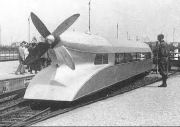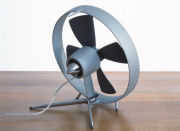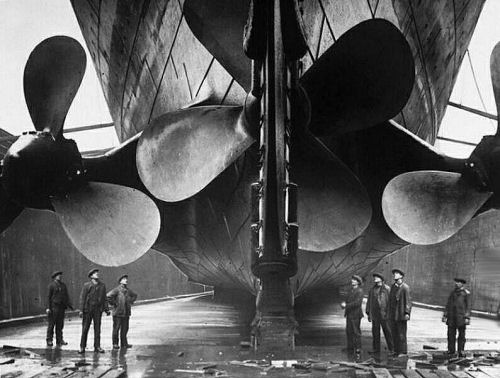4-Bladed Props to the Rescue!
Speed has always been the foul temptress
of power boating. Everyone wants to go faster than they “bought,” and for over 50
years fuel was cheap. Global Positioning System (GPS) stimulated boaters’ interest
in speed as everyone could measure it a tenth of a mile per hour. At the same time,
fuel mileage was rarely, if ever, a concern, nor could most boaters easily measure
it. If speed is the foul temptress, then fuel efficiency has been the proverbial,
red-headed stepchild -- until now. Last summer’s soaring fuel prices have changed
the very nature of millions of boat owners. Customers, who once, wanted every scintilla
of speed they could muster, are now looking to maximize their boat’s fuel efficiency
and range, instead.
  
|
|
Whether it be propelling a heavy train, or the world’s largest aircraft, or simply an old-fashioned air conditioner, four blades come in handy for different applications. |
The only reason a propeller-driven boat moves at all, is because the propeller displaces
(moves) water beneath the boat. As luck (and physics) would have it, the hull of
the boat and the water, together, are pretty slippery, so as the propeller displaces
this water beneath the boat, the boat moves across the top of the water. The more
efficiently the propeller moves this water, the more efficiently the boat moves,
which makes the motor’s job easier. If the motor is working with less strain, it
will use fuel more efficiently.
 This boat builder couldn't make up his mind between three bladed props or four, so he went with a little of each. |
Props Make a Difference
Granted, this is an oversimplification, but it does address the basics of what can
be a very complicated scenario. There are many other factors to consider, such as,
does the boat require “stern-lift” to offset a rearward bias in the center of gravity,
or “bow-lift” to reduce wetted surface area (friction), or is the inefficiency due
to propeller slip (whether hull, motor elevation, or propeller geometry related).
Whether it is weight-, friction-, balance-, or grip-related, all of these issues
can often times be addressed, to one degree or another, just by changing a propeller.
To Re-Prop or Not?
Whether an application’s fuel efficiency and range can be improved upon with a propeller
really depends on just how well it is propped, initially. In some instances, the
boat is propped correctly and there is very little to be gained, while in others,
the propeller is incorrect for the application and significant improvements can
be found. The degree to which this can be done will be highly dependent upon just
what the boat/motor combination is lacking, and just HOW lacking it is.
In one particular example, we were asked by an
OEM boat manufacturer to address just such inefficiency on a 32-foot performance
cruiser with twin 250-hp 4-strokes. The boat had an excessively high minimum plane
speed (marginal plane below 4100 rpm), poor low-speed handling characteristics,
excessively high fuel consumption, and excessive “bow-lift” running the stock moderate-to-high
rake 15 ½” x 17” 3-blades.
An X-stream X-ample
In this case, it was determined that the boat was suffering from a rearward-biased
center of gravity, and propellers without sufficient blade surface area. In order
to address this, we increased blade area by increasing the number of blades to four,
utilized a propeller geometry with lower rake for more “stern-lift”, and dropped
the pitch one inch, to ensure that we allowed the motors to run in the heart of
their torque band.
As a result, at the target rpm of 3500, the original 17” 3-blades ran 15 mph lightly
loaded and 11 mph loaded, using 14.5 GPH. At the same rpm, the 16” 4-blades ran
23 mph and 22 mph at the same respective loads, and used only 13.5 GPH. As you might
expect, the fuel range was similarly extended. As icing on the cake, the tester’s
comments on the boat’s improvement in “feel” were just as important to the manufacturer
as the performance gains. It’s a bit like redesigning the boat, without ever going
back to the mold. Now, this is an unusual case, and not one that will be repeated
often, but it does give a very good example of what can, and sometimes does, happen
just by changing propellers.
Whether you are interested in fuel mileage, speed, hole shot, handling, load-carrying,
or what have you, it is critical to choose the right tool for the right job. Just
as the right prop can make a boat, the wrong prop can break it, so once you determine
the aspects of performance that are most important to you, take the time to find
the prop that best satisfies YOUR needs.